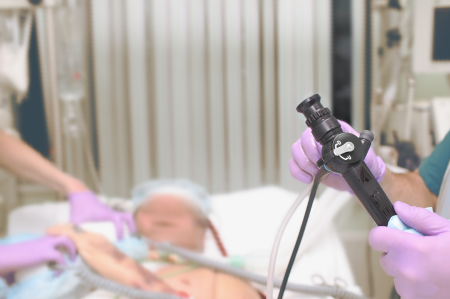
Medically known as bronchopulmonary lavage, the procedure entails washing out the lungs to alleviate the symptoms of diseases such as asbestosis. The procedure was developed in the 1920s and it has been evolving over recent years.
People who struggle with asbestosis as a result of military asbestos exposure may greatly benefit from pulmonary lavage, as the purpose of the procedure is to reduce the lung burden caused by the inhalation of asbestos fibers.
Pulmonary lavage can be done multiple times, regularly, for people who suffer from asbestosis as a treatment that keeps the disease under control. It can remove between 23% and 59% of the lung burden. It was designed to remove a part of the inhaled materials with long lung retention times, such as asbestos fibers. The benefits of pulmonary lavage are an improvement of lung function, including arterial oxygenation.
While a single pulmonary lavage will remove 12% of the lung burden, if you undergo the procedure multiple times, you can have up to 45% of the asbestos fibers washed out. It is worthy of note that pulmonary lavage is performed to remove only particles of toxic agents that the body cannot eliminate. The need for undergoing pulmonary lavage depends on several factors, such as:
- what type of toxic agent have you inhaled
- the size of the asbestos particles
- the number of inhaled asbestos fibers
How Does Pulmonary Lavage Work?
Also known as lung washing, the procedure uses a saline solution to clean the inside of the organs in order to remove as many asbestos fibers as possible in one session. However, people who struggle with asbestosis will need to undergo pulmonary lavage periodically to have as many asbestos fibers as possible removed from their lungs. Another benefit of lung washing is that you will be able to breathe more easily, as asbestosis is known to cause difficulty breathing and shortness of breath. Before the procedure, you will be put under general anesthesia. Subsequently, the medical professional will insert a tube through your mouth into your airways to deliver the saline solution.
The doctor will be permanently seeing what is going on inside of your lungs with the aid of a bronchoscope. Each lung will be washed with 20 to 30 liters of saline solution. Furthermore, during the procedure, thoracic physical therapists will provide chest physiotherapy to help remove the asbestos fibers from your lungs. Eventually, the doctor removes the entire saline solution from your lungs, which will become clearer as your lungs are emptying because they will contain fewer and fewer asbestos fibers.
For What Other Diseases Can I Undergo Pulmonary Lavage?
After the pulmonary lavage, you may need to use oxygen for several days while your lungs finish cleaning themselves. You may experience coughing during this period, which is a normal symptom. Following your first pulmonary lavage, your doctor will schedule a follow-up so that you can have your lungs washed out again. It is noteworthy that not only people who suffer from asbestosis are good candidates for pulmonary lavage, as there are many diseases caused by asbestos that may qualify you for this procedure, such as:
- pulmonary fibrosis
- diffuse pleural thickening
- COPD
- emphysema
- chronic bronchitis
- lung scarring
- mesothelioma
- lung cancer
- bronchial cancer
Therefore, if you struggle with lung disease as a result of military asbestos exposure, it is a good idea to ask your doctor about pulmonary lavage, as you may be a good candidate, particularly if your disease is severe and is causing you great distress in your everyday life. They will be able to let you know if this procedure is suitable for you after a thorough examination of your lungs. Lastly, it is important to know that pulmonary lavage can also be used as a diagnostic tool for people with a history of asbestos exposure, as when the saline solution is drained from your lungs, it will reveal the number of asbestos fibers you have in your lungs, thereby determining how severe your lung disease is.
